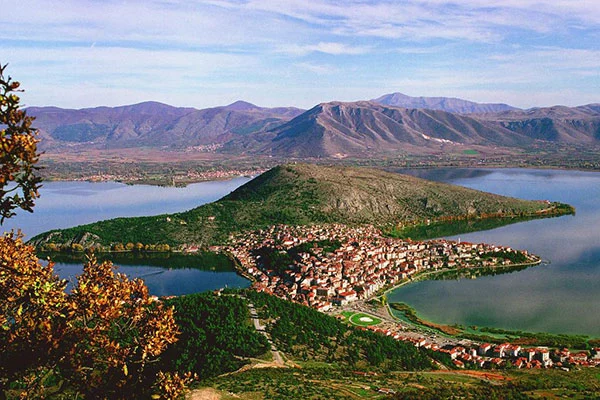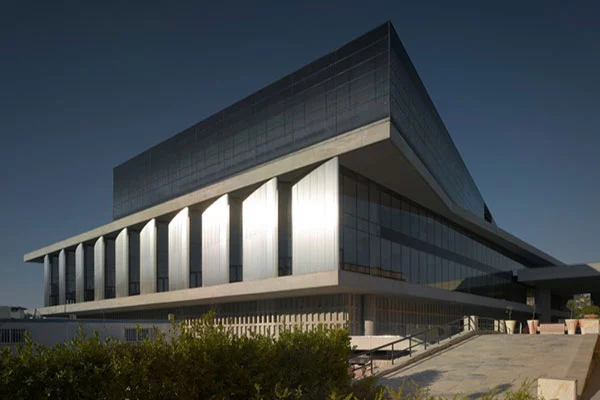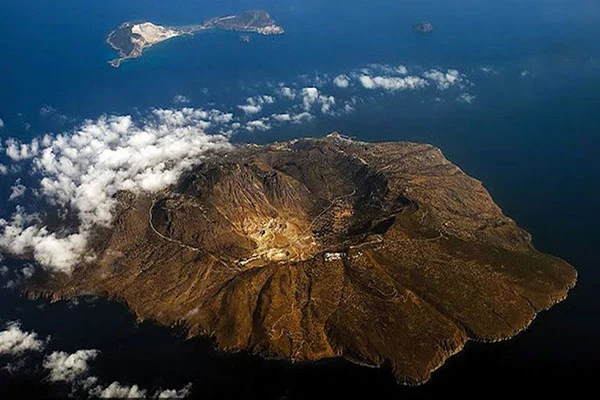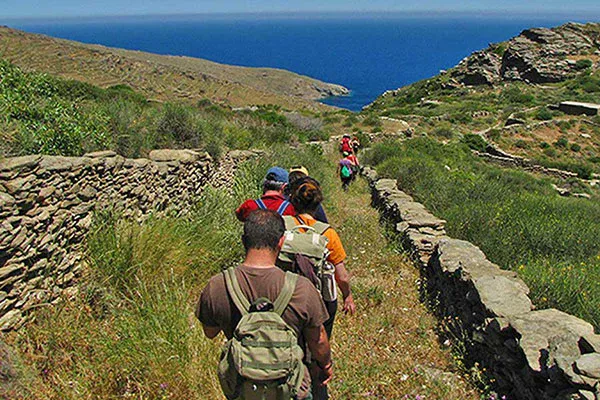
Petralona Cave
The Petralona Cave was spotted by the shepherd of the region Philippos Chatzaridis (1880 - 1984), who, as the rest of the Petralona inhabitants, was an emigrant from Asia Minor, after the 1922 catastrophe. Philippos had noticed that among the limestone rocks of the Kalavros cliffs an oval fissure (~0.7 m long), full of stones and sands, presented the following peculiarities: During winter around the crack the snow was melting earlier than in other spots of the mountain and that the air there was wormer than that of the atmosphere. In the summer contrarly the temperature there was lower than the surrounding area. In addition, a smooth sound from the fissure was sometimes heard, like a breadth. So, Philippos supposed that beneath the crack underground water current was passing, keeping the air temperature steady above it, also creating the puff like sound.
Although a water spring could be very useful to the villagers, for several years they did not pay any attention to Philippos' claims. After many abetments, it was the spring of 1959, when a group of Petralona inhabitants went to the place and dug up the soil from the crack and saw that it was leading to a narrow underground vertical passage. Two young villagers, Vassilis Giannakopoulos and Christos Sariannidis, managed to descent vertically about 7 - 10 m using ropes and lighters. To their surprise they faced a cave instead of a source of water.
The same year the villagers found out that the southern cave wall was not made of stone, but cemented soil (conglomerates). Thus, they dug out an opening of about two meters in diameter, creating the first artificial entrance. Although this entrance eased the exploration of the new underground cavity, it also attracted the attention of treasure hunters and collectors of fossils, stalagmites and stalactites, damaging an environment which had remained untouched for hundreds of thousands of years. However, the halls around this entrance are more affected than the inner and more beautiful chambers, probably because the narrow passages leading to them present difficult access. In spite of the great paleoanthropological importance of the cave, it was only in 1968, by the intervention of Dr. Aris Poulianos, that this entrance was protected by a security door.
Going west to the cave, we enter the "Aristotle Hall", dedicated to the stalagmite philosopher, who is considered father, apart from other disciplines, and Anthropology, as he was among the first to conceive the theory of the evolution of life. In this room, many fossilized bones of bears were found during the excavation. It is likely that the Arhanthropes would sometimes find them in hibernation in the cave, kill them and then feed on their meat, also using the skin to wear, the bones for the production of bone tools, etc. For the "Aristotle's Hall' a bear dummy was created and was placed in the chamber. To the left and high, at the point where the stalagmite flooring is connected with the arch-like ceiling, there was an old natural entrance, which filled with sediments and debris 550,000 years ago.
Then, after touring the rooms that are dedicated to Diana Fossei and Anaxagora, we come to that of the excavator of the Petralona Cave "Aris N. Poulianos". Here, at a depth of 30 meters, a skull of young Arhanthrous has been found. This room is the largest of the cave, which is much larger than the section that can be visited today, which can easily be seen from the map on the outer wall of the Museum. The route we follow today is 700 meters, while the length of all branches is more than 2 kilometers.
Returning, we enter the "Mediterranean Hall", where descending to the left is the representation of an outbreak. There have been traces of fire from burned bones and ashes dating back to 700,000 before today and represent the oldest fire that has lit a human hand on Earth. (The original ashes are exhibited at the Anthropological Museum).














































